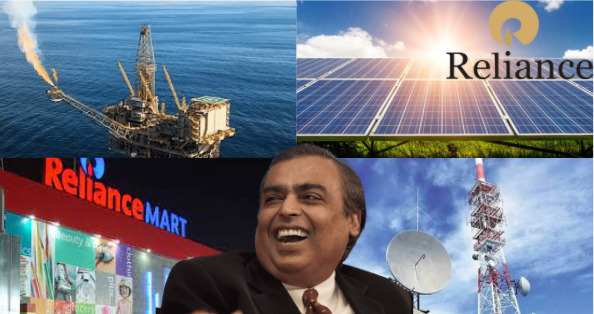- Mukesh Ambani’s Reliance acquired many companies, made investments in multiple new energy startups, and stitched partnerships with numerous firms to make a big bang entry in the green energy market
- Amabani wants Reliance to become the largest energy producer in the country.
- With Reliance’s entry into the green energy sector, his company will play a very crucial role in achieving Prime Minister Modi’s dream of Atmanirbharta in the energy sector.
Reliance Industries Limited, the largest company of India led by Mukesh Ambani, is on a shopping spree of new energy companies around the world. In the last few days, the company acquired many companies, made investments in multiple new energy startups, and stitched partnerships with numerous firms to make a big bang entry in the green energy market.
The largest acquisition is of REC Solar from ChemChina for 771 million dollars. Reliance New Energy Solar Limited also purchased 40 percent shares of Sterling and Wilson Solar from Shapoorji Pallonji & Co. Pvt. Ltd (SPCPL) and Khurshed Yazdi Daruvala, for 2,845 crore rupees.
Reliance Solar became the lead investor with an investment worth 45 million dollars in Series C funding of German solar wafer manufacturer NexWafe GmbH (NexWafe).
Apart from Solar, the other big green energy sector where Mukesh Ambani is focusing on is Hydrogen energy. RIL partnered with Denmark’s Stiesdal, towards its ‘1-1-1’ green-hydrogen goal. Stiesdal has developed an electrolysis technology that is cheaper than others, and this company will help RIL in its hydrogen-driven vehicles ambitions.
During the last Annual General Meeting, Mukesh Ambani announced that his company will invest 75,000 crore rupees in green energy, especially solar and hydrogen, in order to become the largest energy producer in the country and to achieve Prime Minister Narendra Modi’s dream of Atmanirbharta in the energy sector.
“For India to progress, for Atmanirbhar Bharat, energy independence is necessary,” PM Modi said during the announcement of the National Hydrogen Mission. “India has to take a pledge that it will be energy independent by the year we celebrate 100th year of Independence.”
Also read: How Reliance punctured China’s green energy domination dreams?
India spends 12 lakh crore rupees on energy imports every year and National Hydrogen Mission was launched to make the country a leader in Hydrogen-based energy and reduce dependence on imports.
Mukesh Ambani has aligned the goals of his company to Prime Minister Modi for the nation, and he is transforming himself from a company builder to a nation builder. RIL announced that it will set up gigafactories in a 5,000-acre, integrated complex called Dhirubhai Ambani Green Energy Giga Complex, in Jamnagar, Gujarat.
The complex is expected to have an integrated solar photovoltaic module factory for the production of solar energy, an advanced energy storage battery factory for the storage of intermittent energy, an electrolyzer factory to produce green hydrogen, and a fuel-cell factory to convert hydrogen into motive and stationary power. It will also house infrastructure to manufacture ancillary material and equipment for the gigafactories.
Also read: India, now a world leader in renewable energy production
India is the third-largest country in the world in terms of renewable electricity production after China and the United States. Although India has made a big leap in renewable energy production, the country is still dependent on foreign countries, especially China, when it comes to equipment like solar modules, wind turbines, and other modern technologies of green energy production.
Reliance Industries is placing itself very strategically as it plans to take over the market now dominated by Chinese firms – supply of equipment and technologies – not much into production. So, while the companies like Adani Group, ReNew power, and many other companies in the energy business would focus on the production part, RIL plans to end India’s dependence on China for production equipment and technologies.
Also read: Hydrogen fuel cars the future and not electric cars
As TFI has argued earlier, Hydrogen fuelled vehicles and not electric vehicles, are the future of mobility, given the various advantages they have over electric vehicles. So, on one hand, electricity production will move to solar, and on the other hand, mobility will move to hydrogen, and Mukesh Ambani is set to benefit enormously from both. Also, with the entry into the green energy sector, his company will play a very crucial role in achieving Prime Minister Modi’s dream of Atmanirbharta in the energy sector.































